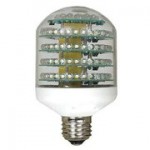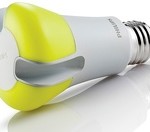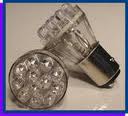 The idea of using LED light bulbs to light up rooms and offices is considered as a new trend by many people. But a careful reading of the resources on this technology will reveal that the concept for LED has been around for decades.
The idea of using LED light bulbs to light up rooms and offices is considered as a new trend by many people. But a careful reading of the resources on this technology will reveal that the concept for LED has been around for decades.
Light-emitting diodes or LED technology actually started as a rough source of illumination from a very simple and flickering yellow light to bright white light that now illuminates most homes, offices and manufacturing plants.
History of the LED Technology
The idea for LED as a lighting technology started with the work of Henry Round of Marconi Labs in 1907. Through his pioneering research, he found out that the junction of the semi-conductors has the ability to provide illumination.
Unfortunately the light produced was dim, thus the research did not continue. In was in the 1920s when the idea of LED was tested, his time German and Russian scientists initiated the tests and research. Just like the early tests, the light produced was dim and did not merit further exploratory researches.
It was in the 1950s when solid results were established when Gallium Arsenide was used. This was the time when massive researches were made initiated by a number of companies and researchers including the Radio Corporation of America.
By 1962, a researcher from General Electric named Nick Holonyak Jr. managed to produce the red light. A brighter light was developed again in 1972 by his student in University of Illinois at Urbana-Champaign.
 By 1980s, there are massive developments in the field of LED researches using a variety of materials from Silicon Carbide to Indium Gallium Nitride. To provide the white light, bright blue chips were used. The process and development of the light technology may be long and winded but the results were successful and efficient.
By 1980s, there are massive developments in the field of LED researches using a variety of materials from Silicon Carbide to Indium Gallium Nitride. To provide the white light, bright blue chips were used. The process and development of the light technology may be long and winded but the results were successful and efficient.
People right now are using LED lamps and the best LED replacement bulbs to light up homes and offices without having to worry about high energy costs.
LED Bulbs as More Energy-Efficient Alternatives
The nice thing about the LED is this match well with other lighting technologies. For example, the Energy Star-rated LED bulbs are known to use 20-25 percent less energy compared to other light bulbs. In a data released by US Department of Energy, it was found out that the best LED replacement bulbs can last 25 times longer compared to the more common incandescent bulbs.
The only concern with these bulbs is that the initial acquisition cost may be higher but the expenses are all worth it and more due to savings that can be generated along the way.
Discover the Types of LED Replacement Bulbs
There are different types of LEB lamps and bulbs and its best to discover first the types before shopping for replacement bulbs. Here’s a listing of the top types of LED bulbs according to shape.
1. Floods- This is the type of LED lamp that can cast a better directional illumination compared with spotlights. These are best used outdoors and can work as landscape lighting options.
2. Spot lights-These are the best LEDs if you are looking to provide a higher concentration of lighting on one part of the house. This is best used as a track lighting inside the house.
3. Candles- These are primarily for decorative purposes and may not work if you are looking for heightened illumination. Use candle LED lamps if you want to tap ambient lighting inside the house.
 4. A-line bulbs- These are the most popular interpretation of the LED technology since these are commonly used inside the house and come in the bulb shape. These bulbs can effectively disperse the lighting and best installed on rooms and hallways.
4. A-line bulbs- These are the most popular interpretation of the LED technology since these are commonly used inside the house and come in the bulb shape. These bulbs can effectively disperse the lighting and best installed on rooms and hallways.
When Shopping for LEDs Bulbs
Aside from the shape, the LEDs can be categorized in terms of the bulb base sizes. You can categorize the LED bulbs as miniature candelabra, the candelabra, intermediate, medium and Bi-pin. The miniature candelabra as the name suggests are known for smaller bases and used primarily on chandeliers. The Bi-pin on the other hand is the category for smaller light LED bulbs.
Knowing these details is important so that you will know the best LED replacement bulbs that are right for your homes. Even if you shop online, make sure you are aware of the base type so that you will not waste your time and money with incompatible bulbs.